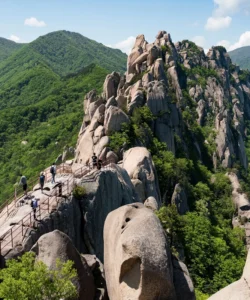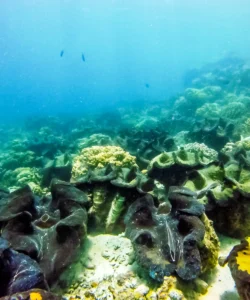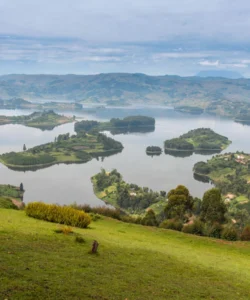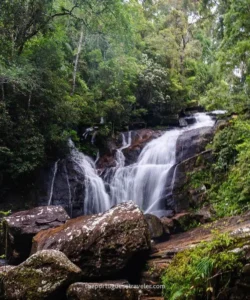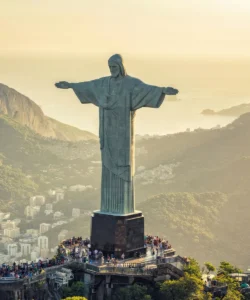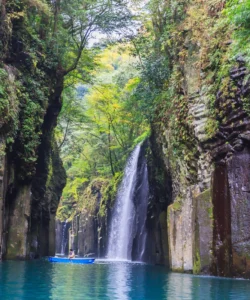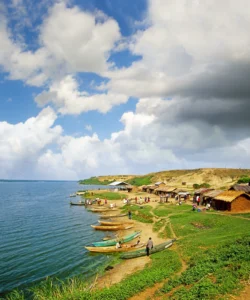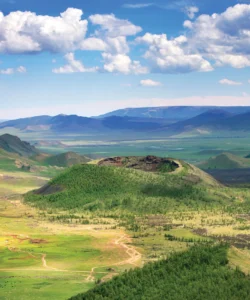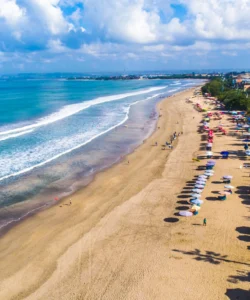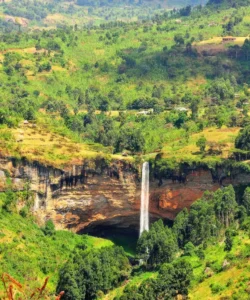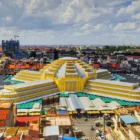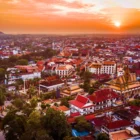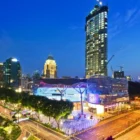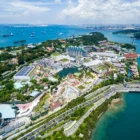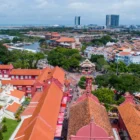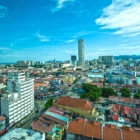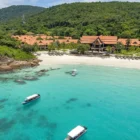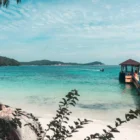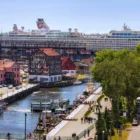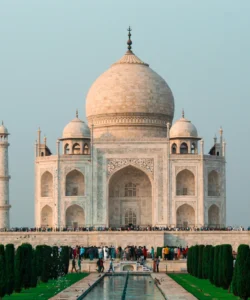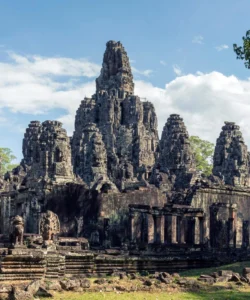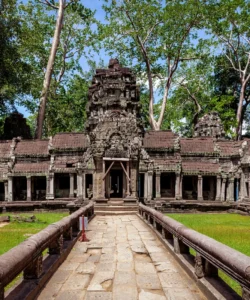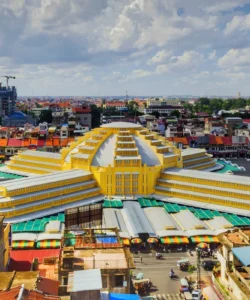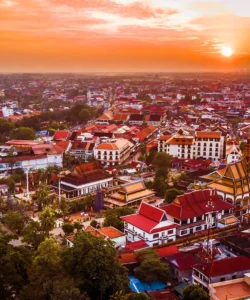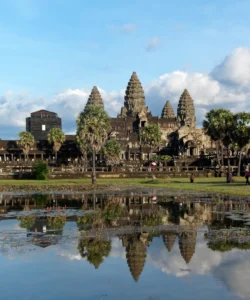Komodo National Park is a breathtaking archipelago in Indonesia, globally recognized for its unique wildlife, stunning landscapes, and rich marine biodiversity. It is a vital conservation area and a truly wild wonder.
Name: Komodo National Park (Taman Nasional Komodo)
Address: The park is located in the Lesser Sunda Islands region of Indonesia, specifically within the administrative boundaries of the East Nusa Tenggara province. It lies between the islands of Sumbawa and Flores. The gateway town and main base for visitors is Labuan Bajo, on the western tip of Flores Island.
How to Get There:
Accessing Komodo National Park involves flying to Labuan Bajo and then taking a boat.
- By Air to Labuan Bajo (LBJ): This is the primary way. Komodo Airport (LBJ) in Labuan Bajo has direct flights from major Indonesian cities like Jakarta (CGK) and Bali (Denpasar – DPS). There are also international direct flights from Singapore (SIN) and Kuala Lumpur (KUL) to Labuan Bajo, making it very accessible. Flight duration from Bali is typically around 1.5 hours.
- From Labuan Bajo to the Park: You can only explore Komodo National Park by boat.
- Day Trips: Speedboats offer day tours to the main highlights (Komodo Island, Rinca Island, Padar Island, Pink Beach, Manta Point).
- Liveaboards: For a more immersive experience, multi-day liveaboard boat trips (2D1N, 3D2N, or longer) on various types of boats (from basic to luxurious Phinisi ships) are highly popular. These allow you to sleep on board and visit multiple islands and dive/snorkel sites.
- Park Entry and Guides: You must be accompanied by a park ranger when visiting Komodo or Rinca Island for safety reasons due to the Komodo dragons. Pre-registration with the park is often required through your boat operator.
Landscape and Architecture:
Komodo National Park’s landscape is a dramatic tapestry of rugged, volcanic islands, pristine beaches, and incredibly rich marine ecosystems. Its “architecture” is almost entirely natural.
- Volcanic Islands: The park comprises three major islands (Komodo, Rinca, and Padar), and 26 smaller islands, all of volcanic origin. The terrain is generally rugged, characterized by rounded, grassy hills (often turning golden brown in the dry season), and steep cliffs that plunge into the surrounding waters.
- Savanna and Dry Forests: The hot and dry climate makes for a distinct vegetation of savanna grasslands and scattered tropical dry (monsoon) forests. The iconic lontar palm is a common sight. This arid landscape stands in stark contrast to the lushness of much of Indonesia.
- Pristine Beaches: The islands boast stunning white-sand beaches. The most famous is Pink Beach (Pantai Merah) on Komodo Island, one of only a handful in the world, where the sand gets its unique hue from microscopic red coral fragments mixed with white sand.
- Panoramic Viewpoints: Padar Island is particularly famous for its iconic viewpoint, where a hike to the summit reveals a breathtaking panorama of three crescent-shaped beaches of different colors (pink, white, and black) nestled amidst turquoise waters and green hills.
- Vibrant Marine Ecosystem: Below the surface, the park is part of the Coral Triangle, the global epicenter of marine biodiversity. It features extensive and incredibly diverse coral reefs, home to over 1,000 species of fish, 260 types of coral, and numerous marine mammals. The strong currents in the area bring rich nutrients, contributing to this abundance.
- No Permanent Tourist Accommodation within Park: There are no hotels or resorts directly within the national park itself. Visitors typically stay in Labuan Bajo and undertake day trips or opt for multi-day liveaboard boats that anchor within the park. The only “architecture” you’ll find is the very basic ranger stations on Komodo and Rinca islands.
What Makes It Famous:
- Komodo Dragons (Varanus komodoensis): This is the unequivocal star attraction. Komodo National Park is the only place in the world where the mighty Komodo dragon, the world’s largest living lizard and an apex predator, exists in its natural wild habitat. Trekking with a park ranger to see these prehistoric-looking creatures is a once-in-a-lifetime experience.
- UNESCO World Heritage Site: The park was designated a UNESCO World Heritage Site in 1991 for its unique terrestrial and marine ecosystems, and for being the exclusive habitat of the Komodo dragon. It is also a UNESCO Biosphere Reserve.
- Padar Island Viewpoint: The iconic, panoramic view from the summit of Padar Island, overlooking its three distinct crescent-shaped beaches, is one of Indonesia’s most photographed landscapes and a major draw.
- Pink Beach: The rare and visually stunning pink-hued sand of Pantai Merah makes it a unique natural wonder.
- World-Class Diving and Snorkeling: Beyond the dragons, Komodo National Park is considered one of the top diving and snorkeling destinations globally. Its strong currents create nutrient-rich waters that support an incredible diversity of marine life, including majestic manta rays (at Manta Point), reef sharks, sea turtles, dugongs, and countless colorful fish and corals.
- Stunning and Diverse Landscapes: The striking contrast between the rugged, dry volcanic hills, the pristine white and pink beaches, and the vibrant blue waters, both above and below the surface, offers exceptional natural beauty unlike many other places.
- “New 7 Wonders of Nature”: Komodo National Park was selected as one of the New 7 Wonders of Nature in 2011, further cementing its global recognition.
Differences from Some Other Wonders:
- Exclusive Habitat of a Specific Iconic Species: While many parks have diverse wildlife, Komodo National Park’s singular fame comes from being the sole natural habitat of the Komodo dragon. This specific, unique, and ancient reptile is its defining feature, setting it apart from other general wildlife parks.
- Combination of Terrestrial and Marine Highlights: Unlike parks that focus solely on land animals or marine life, Komodo offers an equally compelling experience both above and below the water, with the dragons on land and world-class diving/snorkeling in its marine park.
- Dry and Arid Landscape: The dominant savanna and dry forest landscape of Komodo is a stark contrast to the lush, humid rainforests found in many other Indonesian or Southeast Asian national parks (e.g., Taman Negara).
- Boat-Based Exploration: The park’s island nature means all exploration is done by boat, whether on day trips or multi-day liveaboards. There are no roads or extensive land-based driving safaris within the core park area.
- Pink Beach: The presence of a pink sand beach is a rare geological phenomenon that distinguishes it from most other tropical island destinations.
- Limited Human Habitation/Infrastructure within Park: The core of Komodo National Park is deliberately kept wild, with no tourist accommodations within its boundaries. Visitors must stay outside the park (Labuan Bajo) or on liveaboard boats, which enforces a more direct and less commercialized interaction with the wild environment.
Komodo National Park Photos:

